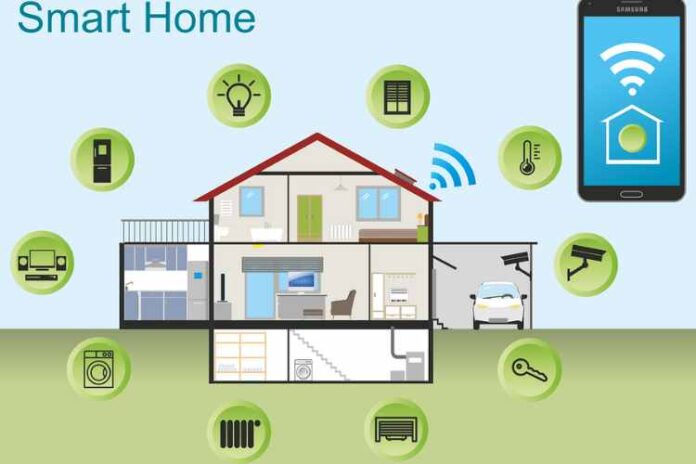Modern technology is increasingly important in all aspects of life, including home care. Home care is a health care field that assists people who need help managing daily activities. That can include providing medical or non-medical care, such as assistance with mobility or support for seniors in their homes. Technology is increasingly being used to help provide home care services, with various technologies employed to support people in their homes. See how technology has begun to carve its influence within home care here.
Types of Technology Used in Home Care
There are a variety of different types of technology that are used to provide home care services. These include:
- Voice-activated virtual assistants: Voice-activated virtual assistants, such as Amazon’s Alexa and Google Home. They help provide reminders and instructions to home care recipients, such as reminding someone to take their medication or of upcoming appointments.
- Wearables: Wearables like fitness trackers and smartwatches can monitor a person’s activity levels and health. It can be particularly useful for monitoring seniors’ health, as it can provide real-time data about their health and alert providers if there are any changes.
- Remote monitoring systems: Remote monitoring systems can track a person’s health and alert providers to any changes. These systems can be particularly helpful for monitoring people with chronic conditions, as they can provide real-time data about their health and alerts if any changes occur.
- Telehealth: Telehealth is a technology that enables medical professionals to provide medical care remotely. It can be particularly useful in home care, as it allows providers to monitor a person’s health without making an in-person visit.
- Mobility devices: Mobility devices, such as wheelchairs and walkers, can help people with limited mobility move about their homes. These devices can be controlled remotely and used to assist with daily activities.
Benefits of Technology in Home Care
Technology is increasingly being used to provide home care services, and many benefits are associated with this. Here are some of the benefits of using technology in home care:
- Improved safety: Technology can be used to enhance the security of home care recipients. For example, remote monitoring systems track a person’s health and alert providers if any changes occur. Additionally, voice-activated virtual assistants can remind people to take their medication or alert providers if there are any changes in a person’s condition.
- Increased efficiency: Technology can also help increase home care providers’ efficiency. For example, remote monitoring systems can provide real-time data about a person’s health, allowing providers to identify problems early on and take action to prevent more serious issues from occurring. Technology can also help streamline administrative tasks, such as scheduling, billing, and documentation, which can help reduce the need for extra staff and make home care providers more efficient.
- Improved quality of life: Technology can also help improve home care recipients’ quality of life. For example, wearables can monitor a person’s activity levels and health, allowing providers to intervene if there are any changes in a person’s condition. Additionally, mobility devices can help people with limited mobility move about their homes, providing them with more independence and freedom.
Common Challenges with Technology in Home Care
While technology can be beneficial in home care, there are also some challenges associated with using technology in home care. Here are some of the common difficulties with using technology in home care:
- Cost: One of the biggest challenges with using technology in home care is the cost. Many of the technologies used in home care can be expensive and prohibitive for some home care providers.
- Lack of training: Another challenge with using technology in home care is the need for more training. Many home care providers need to become more familiar with the technology and may need to learn how to use it effectively.
- Security and privacy: Another challenge with using technology in home care is security and privacy. Home care providers must ensure that any data they collect is secure and compliant with all privacy laws.
- Accessibility: Another challenge with using technology in home care is accessibility. Not all home care recipients have access to the technology, which can limit its effectiveness.
Strategies for Utilizing Technology in Home Care
Despite the challenges with using technology in home care, there are some strategies that home care providers can use to make the most of the technology available. Here are some strategies for utilizing technology in home care:
- Training: Home care providers must be properly trained to use the technology. Providers should be prepared to use the technology and troubleshoot any issues.
- Security: Home care providers should also ensure that any data they collect is secure and compliant with all privacy laws.
- Accessibility: Home care providers should also ensure that the technology is accessible to all home care recipients. It may involve assisting with setting up the technology or providing assistance with using the technology.
- Support: Home care providers should also provide support to home care recipients who are using the technology. It may involve assisting troubleshooting issues or providing training on using the technology.
Technology is becoming an increasingly important part of home care, as it can improve safety, increase efficiency, and improve the quality of life for home care recipients. However, some challenges associated with using technology in home care include cost, lack of training, security and privacy, and accessibility. Home care providers can use strategies such as training, security, accessibility, and support to make the most of the technology available. By doing so, home care providers can provide the best possible care to their clients.






![MX Player Custom Codec [AC3, DTS, MLP, TrueHD, and more] MX Player Custom Codec](https://techmenza.com/wp-content/uploads/2021/10/MX-Player-Custom-Codec-100x70.jpg)


